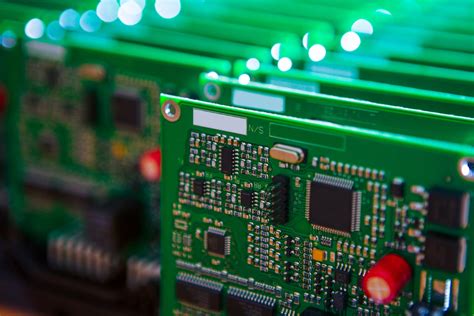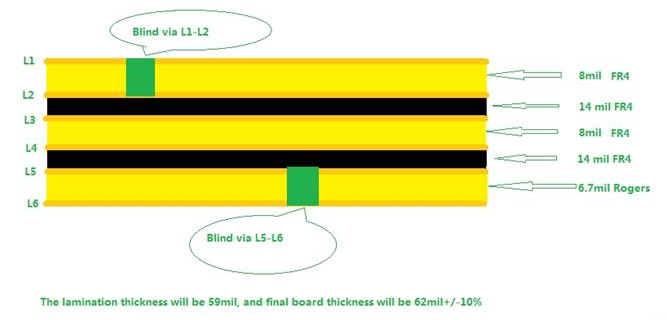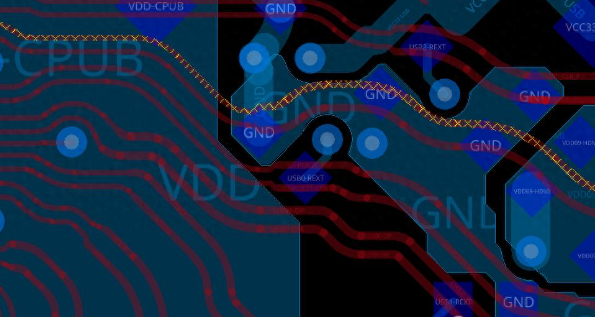Rigid-Flex PCB Manufacturer: Revolutionizing the Electronics Industry
Introduction
The electronics industry has witnessed a paradigm shift in recent years, driven by the increasing demand for compact, lightweight, and high-performance electronic devices. As a result, the need for advanced printed circuit board (PCB) technologies has grown exponentially. Among these technologies, Rigid-Flex PCBs have emerged as a game-changer, offering a unique combination of flexibility and rigidity that caters to the evolving requirements of modern electronics. This article delves into the world of Rigid-Flex PCB manufacturing, exploring its benefits, applications, and the key considerations when selecting a Rigid-Flex PCB manufacturer.
What is a Rigid-Flex PCB?
A Rigid-Flex PCB is a hybrid circuit board that combines the best features of both rigid and flexible PCBs. It consists of multiple layers of flexible circuit substrates attached to one or more rigid boards. The flexible layers are typically made of polyimide or similar materials, while the rigid sections are composed of traditional FR-4 or other rigid materials. This unique combination allows the PCB to bend and flex in specific areas while maintaining structural integrity in others.
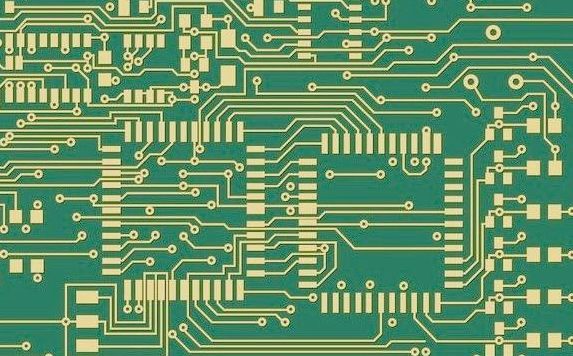
Benefits of Rigid-Flex PCBs
- Space and Weight Reduction: Rigid-Flex PCBs eliminate the need for connectors and cables between rigid boards, significantly reducing the overall size and weight of the electronic device. This is particularly beneficial in applications where space is at a premium, such as in aerospace, medical devices, and wearable technology.
- Enhanced Reliability: By integrating multiple rigid and flexible layers into a single unit, Rigid-Flex PCBs reduce the number of interconnects, which are often the weakest points in a circuit. This results in improved reliability and durability, as there are fewer potential failure points.
- Improved Signal Integrity: The seamless integration of rigid and flexible sections minimizes signal loss and electromagnetic interference (EMI), leading to better signal integrity and overall performance.
- Design Flexibility: Rigid-Flex PCBs offer unparalleled design flexibility, allowing engineers to create complex, three-dimensional layouts that would be impossible with traditional rigid PCBs. This enables the development of innovative and compact electronic devices.
- Cost Efficiency: Although the initial design and manufacturing costs of Rigid-Flex PCBs may be higher, the long-term savings in assembly, maintenance, and reliability often outweigh the upfront investment.
Applications of Rigid-Flex PCBs
Rigid-Flex PCBs are used in a wide range of industries and applications, including:
- Aerospace and Defense: The aerospace and defense sectors require highly reliable and compact electronic systems. Rigid-Flex PCBs are used in avionics, satellites, and military equipment, where they provide the necessary durability and performance in harsh environments.
- Medical Devices: In the medical field, Rigid-Flex PCBs are used in devices such as pacemakers, imaging equipment, and surgical instruments. Their ability to conform to the shape of the device and withstand repeated flexing makes them ideal for these applications.
- Consumer Electronics: The demand for smaller, lighter, and more powerful consumer electronics has driven the adoption of Rigid-Flex PCBs in smartphones, tablets, laptops, and wearable devices.
- Automotive: Modern vehicles are equipped with a plethora of electronic systems, from infotainment to advanced driver-assistance systems (ADAS). Rigid-Flex PCBs are used in these systems to ensure reliable performance in the challenging automotive environment.
- Industrial Equipment: Rigid-Flex PCBs are also used in industrial automation, robotics, and control systems, where they provide the necessary durability and flexibility to withstand harsh operating conditions.
Key Considerations When Selecting a Rigid-Flex PCB Manufacturer
Choosing the right Rigid-Flex PCB manufacturer is crucial to the success of your project. Here are some key factors to consider:
- Experience and Expertise: Look for a manufacturer with a proven track record in Rigid-Flex PCB design and manufacturing. Experience in your specific industry or application can be a significant advantage.
- Quality Assurance: Ensure that the manufacturer adheres to strict quality control standards, such as ISO 9001 and IPC standards. This will help guarantee the reliability and performance of your Rigid-Flex PCBs.
- Design Support: A good manufacturer should offer comprehensive design support, including assistance with material selection, layout optimization, and design for manufacturability (DFM). This can help you avoid costly mistakes and ensure a smooth production process.
- Manufacturing Capabilities: Evaluate the manufacturer’s capabilities in terms of technology, equipment, and production capacity. Make sure they can handle the complexity and volume of your project.
- Material Selection: The choice of materials is critical in Rigid-Flex PCB manufacturing. Ensure that the manufacturer has access to high-quality materials and can recommend the best options for your specific application.
- Lead Times and Flexibility: Consider the manufacturer’s lead times and their ability to accommodate changes or rush orders. Flexibility in production scheduling can be crucial, especially in fast-paced industries.
- Cost: While cost should not be the sole deciding factor, it is essential to find a manufacturer that offers competitive pricing without compromising on quality.
- Customer Support: Good communication and customer support are vital throughout the manufacturing process. Choose a manufacturer that is responsive, transparent, and willing to work closely with you to meet your needs.
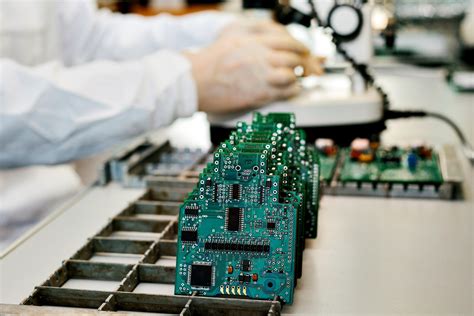
The Manufacturing Process of Rigid-Flex PCBs
The manufacturing process of Rigid-Flex PCBs is more complex than that of traditional rigid PCBs, involving several specialized steps:
- Design and Layout: The process begins with the design and layout of the PCB, taking into account the specific requirements of the application. This includes determining the number of layers, the placement of rigid and flexible sections, and the routing of traces.
- Material Selection: The appropriate materials are selected based on the design requirements. This includes choosing the right type of flexible substrate, adhesive materials, and rigid board materials.
- Layer Preparation: The flexible and rigid layers are prepared separately. The flexible layers are typically laminated with adhesive and copper foil, while the rigid layers are prepared using standard PCB fabrication techniques.
- Lamination: The flexible and rigid layers are laminated together under heat and pressure to form a single, unified structure. This step requires precise control to ensure proper bonding and alignment.
- Drilling and Plating: Holes are drilled through the laminated structure to create vias and through-holes. These holes are then plated with copper to establish electrical connections between layers.
- Patterning and Etching: The copper layers are patterned using photolithography and etched to create the desired circuit traces. This step requires high precision to ensure accurate trace widths and spacing.
- Coverlay Application: A protective coverlay is applied to the flexible sections of the PCB to insulate and protect the circuits. This coverlay is typically made of polyimide and is applied using heat and pressure.
- Surface Finish: The exposed copper surfaces are coated with a surface finish, such as ENIG (Electroless Nickel Immersion Gold) or HASL (Hot Air Solder Leveling), to protect against oxidation and improve solderability.
- Testing and Inspection: The finished Rigid-Flex PCB undergoes rigorous testing and inspection to ensure it meets the required specifications and quality standards. This includes electrical testing, visual inspection, and dimensional checks.
- Assembly: In some cases, the Rigid-Flex PCB may be assembled with components before being integrated into the final product. This step requires careful handling to avoid damaging the flexible sections.
Conclusion
Rigid-Flex PCBs represent a significant advancement in PCB technology, offering a unique combination of flexibility, reliability, and performance. As the demand for compact and high-performance electronic devices continues to grow, Rigid-Flex PCBs are poised to play an increasingly important role in the electronics industry. Selecting the right Rigid-Flex PCB manufacturer is crucial to the success of your project, and careful consideration of factors such as experience, quality assurance, design support, and manufacturing capabilities can help ensure a successful outcome. With the right partner, Rigid-Flex PCBs can unlock new possibilities in electronic design and enable the development of innovative and cutting-edge products.



